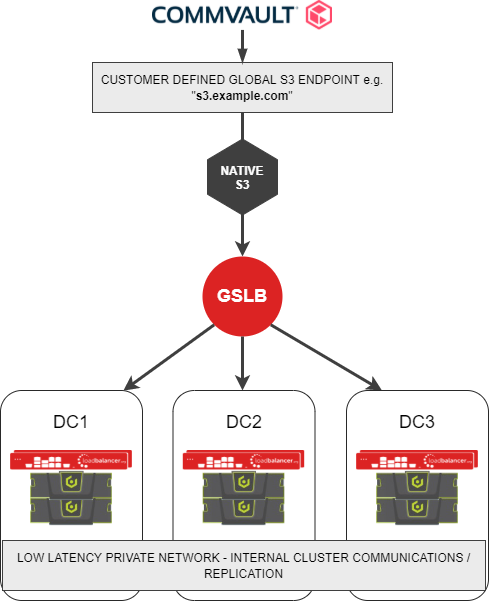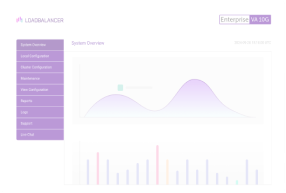Load balancing Cloudian with Commvault
Benefits of load balancing Cloudian with Commvault
Load balancing Cloudian with Commvault provides the following significant benefits:
- Highly available backups
- Quicker recovery
- Performance at scale
- Multisite resilience
About the combined Cloudian and Commvault solution
Commvault integrates seamlessly with Cloudian HyperStore to provide a fast, on-premises, limitlessly-scalable backup target. This is essential to accelerate and achieve critical RTO and RPO SLAs. Instead of having to restore large datasets from the cloud, Cloudian’s fast access is done in just minutes.
How to load balance Cloudian and Commvault
The load balancer sits in front of the Cloudian deployment and manages the traffic distribution between Commvault and Cloudian for high availability. It ensures that traffic is distributed evenly across the nodes optimising the load on each node. It also monitors and performs health checks on a node to ensure traffic is routed correctly to healthy nodes. Without the use of a load balancer, an offline or failed node would still receive traffic, causing failures.
The same load balancer can also be leveraged to provide uninterrupted and reliable access to the Web Console/Command Center. This is achieved by configuring an additional VIP to handle HTTP and HTTPS traffic on ports 80 & 443. Persistence is enabled to ensure that connections from a particular client during a session are handled by the same Web Console.

Multi-site storage deployment concept
In a multi-site scenario, the Loadbalancer.org appliances sit in front of a Cloudian deployment, preferably two to avoid introducing a single point of failure. DNS delegation can then be used to delegate responsibility for the relevant sub domain/endpoint (e.g. s3.example.com) to the GSLB service on the load balancers. Once delegated, it is the GSLB service on each load balancer that is responsible for providing intelligent DNS responses to inbound queries for the endpoint. The responses given depend on the health of each Cloudian deployment and the location of the DC relative to the client making the request if Topology is configured.
The example below shows a three site setup with an HA pair of load balancers in each site. Once GSLB and DNS delegation are correctly configured, the six load balancers act as intelligent name servers for the endpoint in question.



















